Recovery
Exercising on a regular basis is one of the best forms of stress relief and hugely beneficial to our self esteem. It can also be very therapeutic and of course, really freaking challenging at times. The only thing harder than a challenging workout is not being able to workout! We’ve all had those days where we simply don’t feel well. Our bodies ache all over, we can barely squat down to our chairs at work, and the thought of exercising causes us to tense up further. Even worse, when we get injured and our ability to exercise is limited. While there are parts of training that are beneficial to push through in order to gain a certain adaptation, we have to pay close attention to our recovery in order to get there safely.
There are many factors that influence our recovery in positive ways. Nutritionally, we can support our bodies with an abundance of anti-inflammatory foods. Foods rich in omega-3 fatty acids like fish oil, flax seeds, chia seeds and grass-fed beef will help keep inflammation at bay. Protein and amino acids are critical for muscle building and recovery. Fruits and vegetables are also a key component. Micronutrient rich foods replenish and restore essential vitamins and minerals that are depleted during exercise while also offering antioxidants and phytonutrients that protect us from illnesses.
Magnesium and calcium are used for muscle contraction and relaxation. Common symptoms of a lack or imbalance of these essential minerals are muscle cramps and twitching. While we can easily get enough calcium from foods, magnesium is not as abundant in our food or water supply. Magnesium is used for over 300 enzymatic reactions in our bodies. It is critical for energy metabolism and to maintain normal muscle function. Magnesium also enhances glucose availability in our brain, muscles and blood, which delays lactate accumulation in muscles. While there are many oral magnesium supplements in several different forms (citrate, glycinate, etc.), magnesium is best absorbed through our skin. Great options for magnesium supplementation include epsom salt baths and topical magnesium spray. If we’re feeling extra run-down, chilling for an hour in a magnesium-rich float spa will certainly help bring us back to life!
Sleep is also fundamental to recovery. Sleep is imperative to allow the body to repair and detoxify. The more stress we have on our bodies in terms of hours exercising, lifestyle factors and exposure to damaging foods, the more sleep we need in order to recover. If we are between the ages of 18 and 64 we need an average of 7 to 9 hours of sleep. Adding in strenuous exercise, and that number must increase in order to repair and grow tissues. If we are chronically under sleeping, we can expect up to 68% increase in potential to get injured. We can have the best diet on earth, but without enough sleep we won’t be able to achieve peak cognitive or athletic performance.
We can also use movement to help increase blood flow and boost recovery. Stretching helps us increase our range of motion and loosens up tight areas that could be subject to injury. Deep tissue work like massage, active release and foam rolling aid in preventing delayed-onset muscle soreness. Dynamic compression like the Normatec system or doing some light jumping causes an increase in lymphatic movement. Our lymphatic system is the highway for toxins and waste products, and the faster we move them out of our bodies, the faster we will recover. Cycling through different forms of these physical recovery methods is a great approach to cover all the bases and prevent injuries.
While the list of recovery methods may seem daunting, they can easily be sprinkled throughout our day. Choosing to nourish our bodies with nutrient dense foods, prioritize sleep for its vast benefits, and spend a few minutes treating our hard-working bodies to some physical relief, will be well-received on our journey to being fit for life.
Sources:
Axe, Josh. “Do’s and Don’ts of Muscle Recovery.” Dr. Axe, 17 July 2015, draxe.com/muscle-recovery/.
Zhang, Yijia, et al. “Can Magnesium Enhance Exercise Performance?” Nutrients, MDPI, 28 Aug. 2017, www.ncbi.nlm.nih.gov/pmc/articles/PMC5622706/.
Pearcey, Gregory E P, et al. “Foam Rolling for Delayed-Onset Muscle Soreness and Recovery of Dynamic Performance Measures.” Journal of Athletic Training, National Athletic Trainers Association, Jan. 2015, www.ncbi.nlm.nih.gov/pmc/articles/PMC4299735/.
Vyazovskiy, Vladyslav V. “Sleep, Recovery, and Metaregulation: Explaining the Benefits of Sleep.” Nature and Science of Sleep, Dove Medical Press, 17 Dec. 2015, www.ncbi.nlm.nih.gov/pmc/articles/PMC4689288/.
